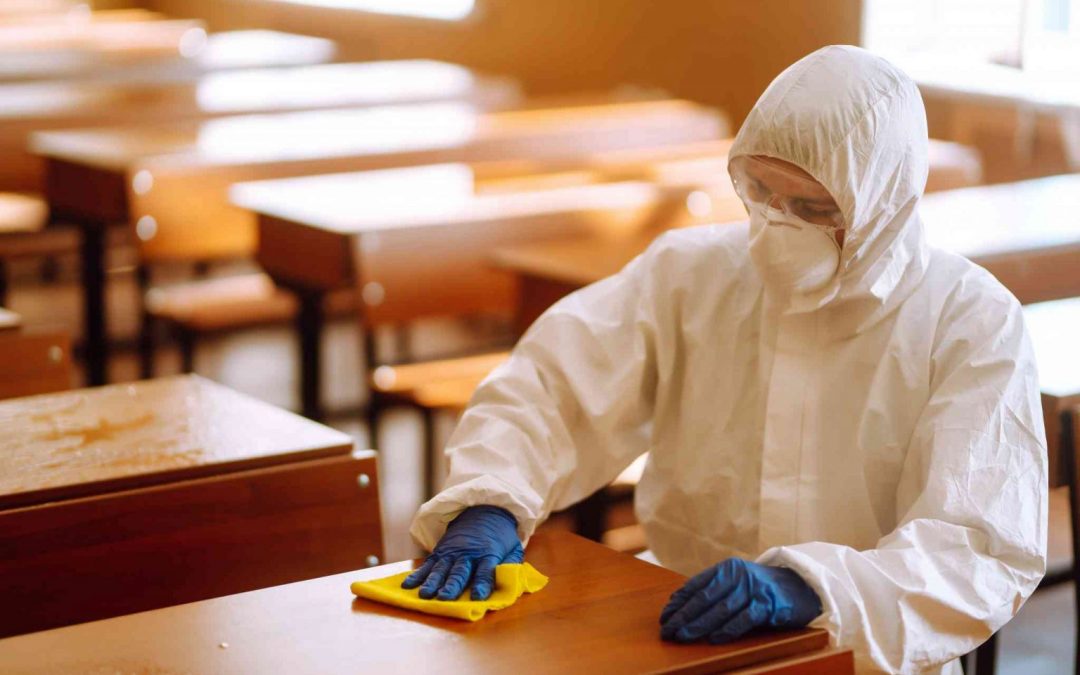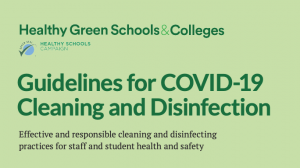Schools are entering an unprecedented time as many prepare their employees and students back into their buildings. It is critical to consider the health and safety of students—especially children—from potential hazardous chemicals in the marketplace claiming to be the most effective in preventing and eradicating pathogens.
CEO of Green Seal, Doug Gatlin, published a warning to schools, stating that “over-using a product will not be more effective at killing the COVID-19 virus and leads to waste and unnecessary chemical exposure. Administrators should consider that disinfectants can include ingredients linked to asthma, cancer and endocrine disruption.” The lesson here is to be educated about the different options of disinfection procedures and then plan the appropriate disinfection procedures to take. Cleaning companies as well as schools, building managers and business owners need to consider protecting the safety and health of building occupants as well as take into account indoor air quality.
Green Seal, in partnership with Healthy Green Schools & Colleges and several United States schools and facilities, released a “Guideline for Safer COVID-19 Cleaning and Disinfection”. This effective guide was produced by many leading experts in the industry and should be reviewed by schools, parents, and cleaning companies alike.
The overarching summary of the release lists the following order for the best practices regarding disinfection and preventing the spread of COVID-19:
- Create a cleaning and disinfecting plan.
- Ensure that cleaning personnel are properly trained.
- Maintain sustainability and healthy indoor air.
- Communicate the cleaning and disinfecting plan.
- Provide safer working conditions.
Schools should educate everyone in the facility in the prevention of the spread of germs and viruses. Just as in any public space, social distancing rules, appropriately wearing masks, frequently washing and/or sanitizing hands, and frequent cleaning and disinfection of public spaces applies. The guide also assists schools in the selection of trained cleaning personnel, maintaining healthy air quality while not over-using cleaning and disinfecting products.
There is no one product that can absolutely replace professional cleaning and disinfection. In addition to frequent cleaning, there are many additional types of disinfectant sprayers and foggers and antimicrobial products. Sprayers have a variety of effectiveness as they rely on the user spraying close, while not over-wetting the surface and only work well on smaller spaces. Electrostatic sprayers contain charged mist which most effectively attract to surfaces and work well in most spaces, specifically larger areas. Antimicrobial products coat surfaces to protect people from bacteria, mold, and fungi for up to 90 days. They do not however, protect against viruses and need to be used in addition to regular cleaning and disinfection. As suggested by Green Seal, the use of foggers is not recommended for schools because they increase exposure to hazardous levels of chemicals. The use of such products should be designated to trained professionals because they will know which products to use.
Another guide is the EPA List N of disinfectant products that are approved to be the safest, while being effective to use in schools, at home, and in hospitals. The following active ingredients are recommended safest in disinfectants:
Hydrogen peroxide (best when not combined with peroxyacetic acid)
Citric Acid
Lactic Acid
Ethyl Alcohol (also known as ethanol or just alcohol)
Isopropyl Alcohol
Peroxyacetic Acid (best when not combined with hydrogen peroxide)
Sodium Bisulfate
Hypochlorous Acid
With 50 years of professional experience cleaning and disinfecting, you can trust us with assisting you in planning for disinfection cleaning. We proudly use Green Seal products and EPA-certified disinfectants. Our procedures and products have always been selected for their protection of air quality and to clean for the health of people and the environment.
As a commercial cleaning company, we look to the leading industry experts about current cleaning and disinfection practices. Our favorite experts include:
BSCAI
CDC
Diversey
EPA
Green Seal
ISSA
OSHA
SOURCES:

